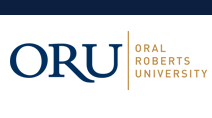Document Type
Book
Publication Date
2-11-2010
Abstract
The Open Notebook Science Solubility Challenge Solubility is an important consideration for many chemistry applications. Synthetic chemists usually use a solvent to perform reactions and knowledge of the solubility of the starting materials or products can be very useful to pick an appropriate solvent. Analytical chemists can use solubility to design separation techniques and factor in dynamic range considerations. Physical chemists can create and evaluate their models of how molecules interact in the solubilization and precipitation processes. Solubility data can be obtained from a variety of online and offline sources. As with all chemical data, it can be a challenge to evaluate reported measurements. Some databases offer no references while others provide citations to peer reviewed journal articles. Given the choice, more weight is generally given to the latter. This is reasonable in most cases because more information about the purity of compounds and the methods used are available in peer-reviewed articles. However, the information for how a specific measurement was obtained within a journal article is not generally provided. General methods are provided but the raw data for a specific measurement are typically not published. Peer review is not intended to validate individual measurements - its function is to ensure that the authors made appropriate conclusions based on their processed datasets and the state of knowledge in the field. The Open Notebook Science Challenge was initiated in the fall of 2008 as the result of a discussion on a train in the UK between Jean-Claude Bradley and Cameron Neylon. The concept was very simple: create a crowdsourcing opportunity for the chemistry community to contribute solubility measurements under Open Notebook Science conditions. This method of publication entails providing immediate public access to the chemist's laboratory notebook, as well as all raw data used to compute the measurements. On Sept 3, 2008 the first ONSC measurements were recorded by Bradley and Neylon at the University of Southampton in Neylon's laboratory. The project was soon sponsored by Submeta, offering ten $500 awards for students in the US or the UK who best recorded how they performed their experiments. Furthermore, the first 3 winners also received one year subscriptions to Nature magazine, thanks to a sponsorship from the Nature Publishing Group. Sigma-Aldrich supported the contest by donating chemicals upon request. Students were evaluated by a group of judges who convened once a month to deliberate the next award. Judges also provided feedback to the students by commenting on their lab notebook pages directly on the wiki. Their expertise ranged from chemistry to mathematics, spectroscopy and molecular biology.
Recommended Citation
Andrew Lang, Jean-Claude Bradley, Cameron Neylon, Rajarshi Guha, et al.. Open Notebook Science Challenge Solubilities of Organic Compounds in Organic Solvents. Third Edition(2010) Available at: http://works.bepress.com/andrew-sid-lang/17/




